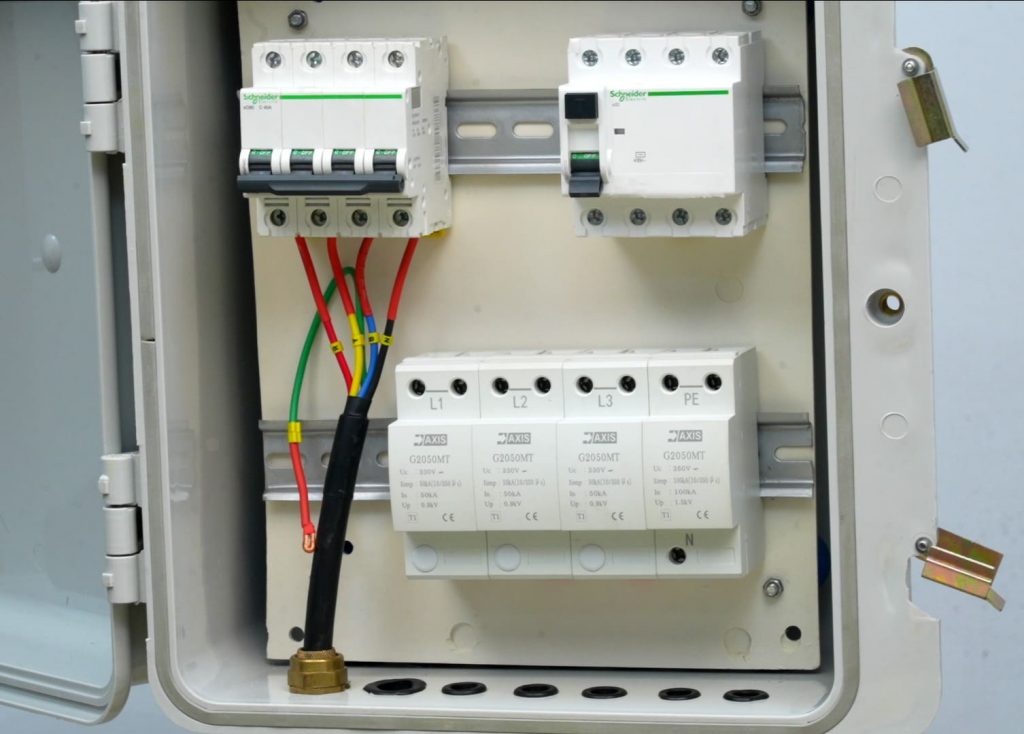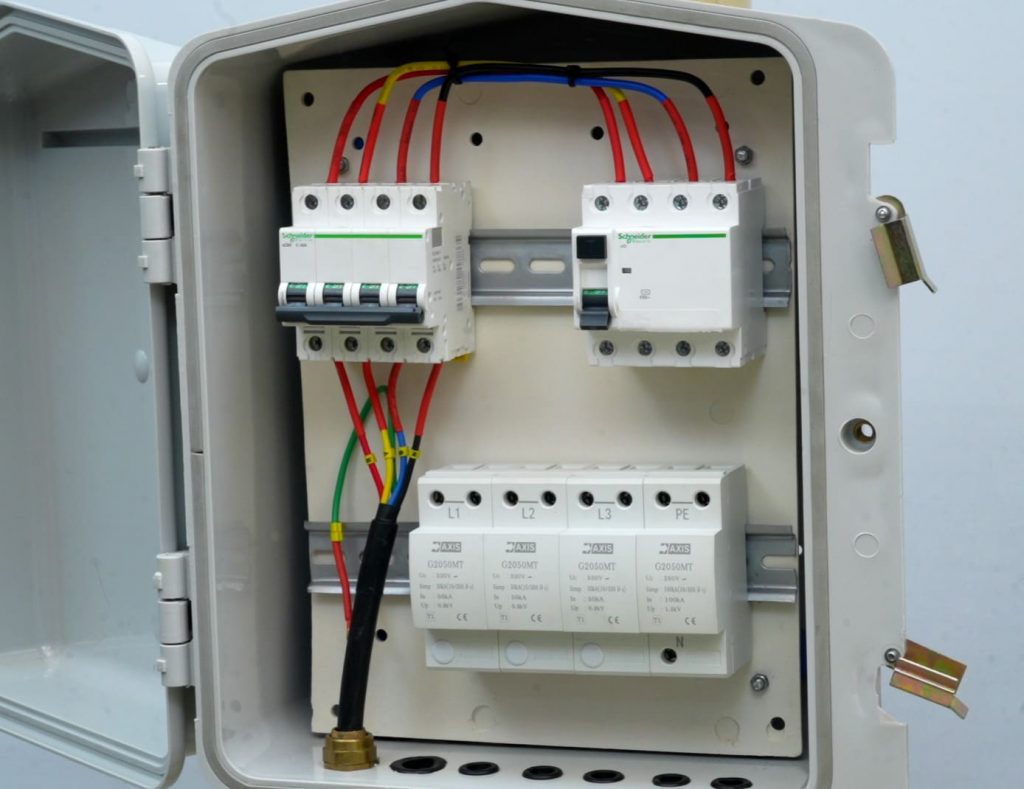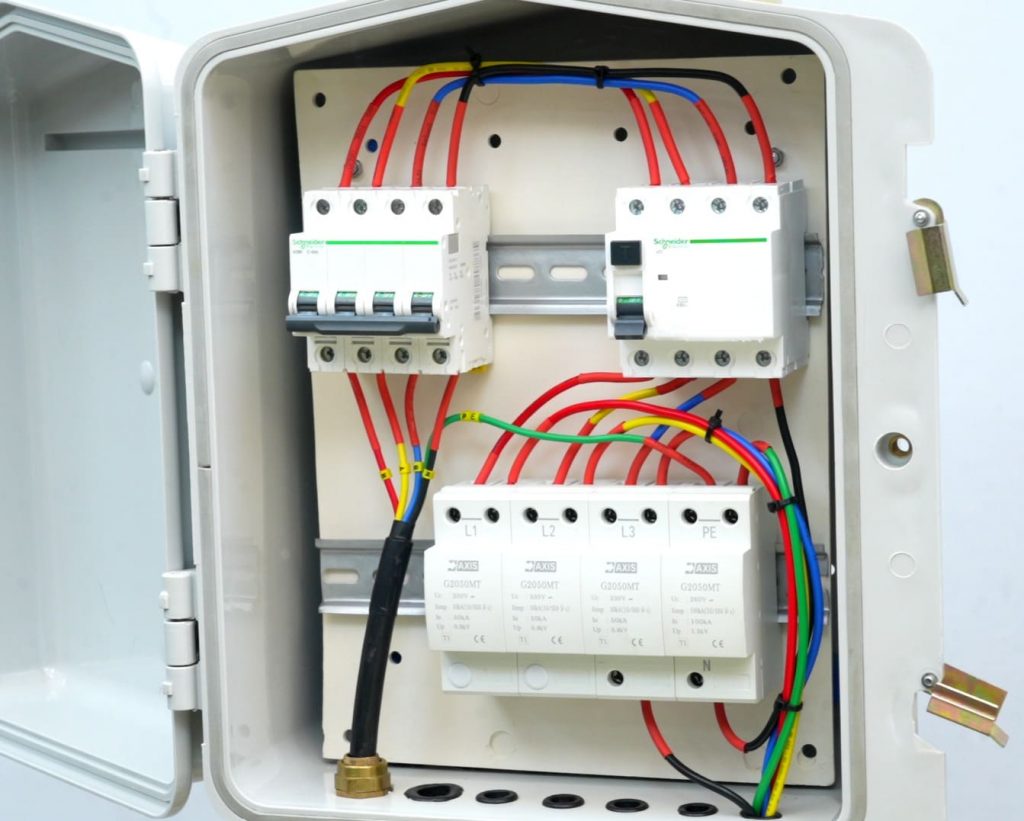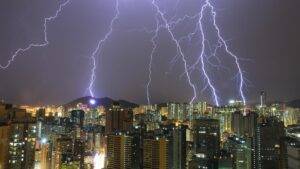Are you spending too much time to install a Surge Protection Device (SPD)? This blog shows you how to install a Surge Protection Device faster while meeting all safety standards.
In this blog, we’ll walk you through a real-time installation of a Type 1 Surge Protection Device (SPD), giving you a first-hand look at the process. We will install the Surge Protection Device in the incoming panel inside the SMC Distribution Box. You will learn how to properly connect the SPD’s 3-phase wires, neutral wire, and earth wire from the MCB to the RCCB and the SPD.
What is a Surge Protection Device?
Surge Protection Device is designed to protect sensitive electronic & electrical equipment by limiting transient overvoltage and diverting surge currents. It is the most efficient and commonly used type of overvoltage protection for any structure.
Note: Please ensure to use proper tools, follow correct procedures, wear personal protective equipment, and install surge protection devices correctly to prevent injuries and ensure proper protection.
Placement of Surge Protection Device
Look at the devices below.

The first is an MCB, the second is an RCCB, and the third is Axis SPD. You can also install the Surge Protection Device (SPD) between MCB & RCCB based on your need of protection.
Now, let’s understand the colourful wires. This is a 3-phase incoming system with neutral and earth.
- The red(R), yellow(Y), and blue(B) wires are the 3 phase wires
- The black wire is the neutral wire
- The green one is the earth wire
Surge Protection Device Installation Guide
Step 1) Identify a Distribution Box:
We have used an SMC Distribution Box here because you need a larger box while installing Type 1 SPD.
“Type 1+2 and Type 2 SPD” fit in smaller boxes. If there’s no space in the Distribution Box, install the SPD externally in a separate box which is connected to the Distribution Box.
Step 2) Select a panel:
Install SPDs in the incoming or subsidiary panels.
For the incoming panel:
- Use Type 1 or Type 1+2 SPDs
For the subsidiary panel:
- Use Type 2 SPDs, but only if Type 1 or 1+2 is already in the incoming panel
- In case no Type 1 or 1+2 is in the incoming panel, you will have to install Type 1+2 directly in the subsidiary panel
In this blog, we will be installing a Type 1 SPD in the incoming panel.
Talk to our engineers!
Step 3) Identify SPD’s terminals:
- The terminal marked “PE” is for Earth.
- The terminal marked “N” is for neutral.
- Phase terminals are marked as L1, L2 & L3 respectively.
Step 4) Connecting MCB to RCCB:
The supply is already connected to the MCB’s incoming terminals. Now we will connect the outgoing terminal of MCB with the incoming terminal of RCCB, the output terminal of RCCB will connect to the equipment side.
First, connect the 3 phase wires:
- The red wire, the blue wire and the yellow wire.
- Then connect the neutral (black wire) and finally, the earth (green wire).
The MCB is now connected to the RCCB, as shown in the image below.

Step 5) Connecting RCCB to SPD:
From the output terminal of RCCB, create a loop for each terminal to connect it with the SPD, including earthing from the earth terminal. The RCCB output terminal will be connected to SPD and the equipment. SPD is a parallel device, so it doesn’t have output terminals.
- Connect the 3 phase wires (red, blue, yellow)
- Connect the neutral wire to the neutral terminal
- Connect the earth wire to the earth terminal (marked “PE”)
The RCCB is now connected to the SPD, as shown in the image below.

Step 6) The Output:
Now MCB, RCCB, and Axis SPD are connected. Remember to connect the wires based on your specific applications and ensure the tightness of the connection and wire size.
Below is the final picture showing how everything should look.

We hope you now have a clear idea about how to install a Surge protection Device (SPD). At Axis, we have a team of 50+ engineers to help you design and install your Surge Protection Device (SPD) and Lightning Protection Systems.
Thank you for reading the blog, Axis is a leading manufacturer and supplier of Electrical Components to over 80+ Countries. Talk to our industry expert by visiting our Contact Us section. You can also watch our videos by our experts – click here.






